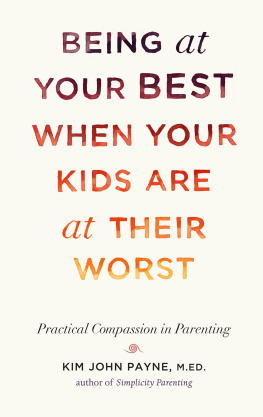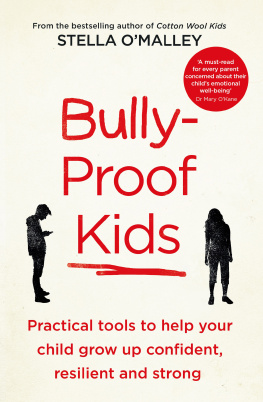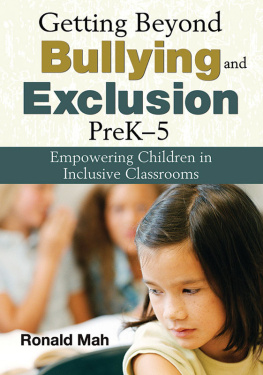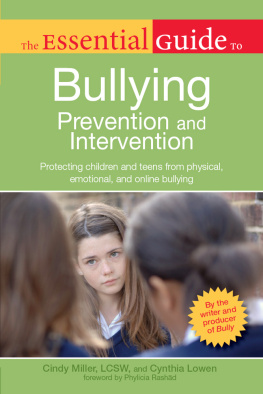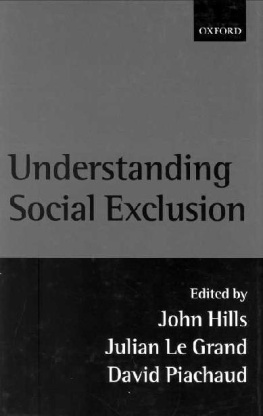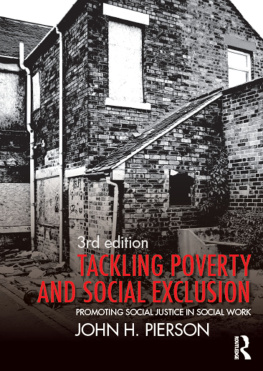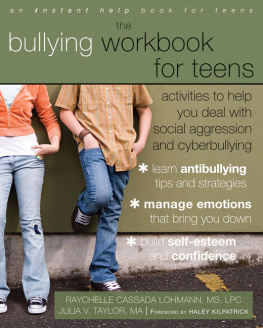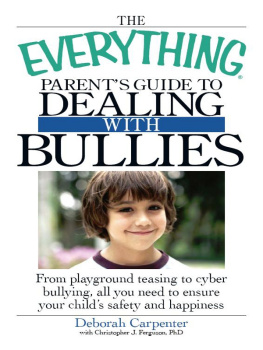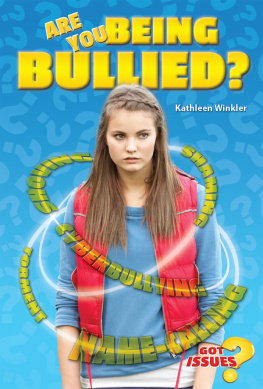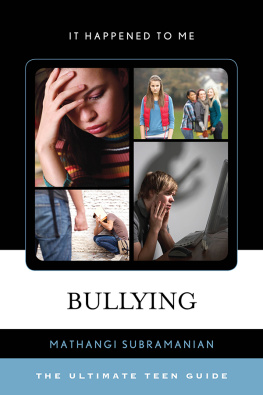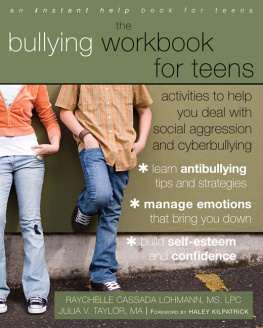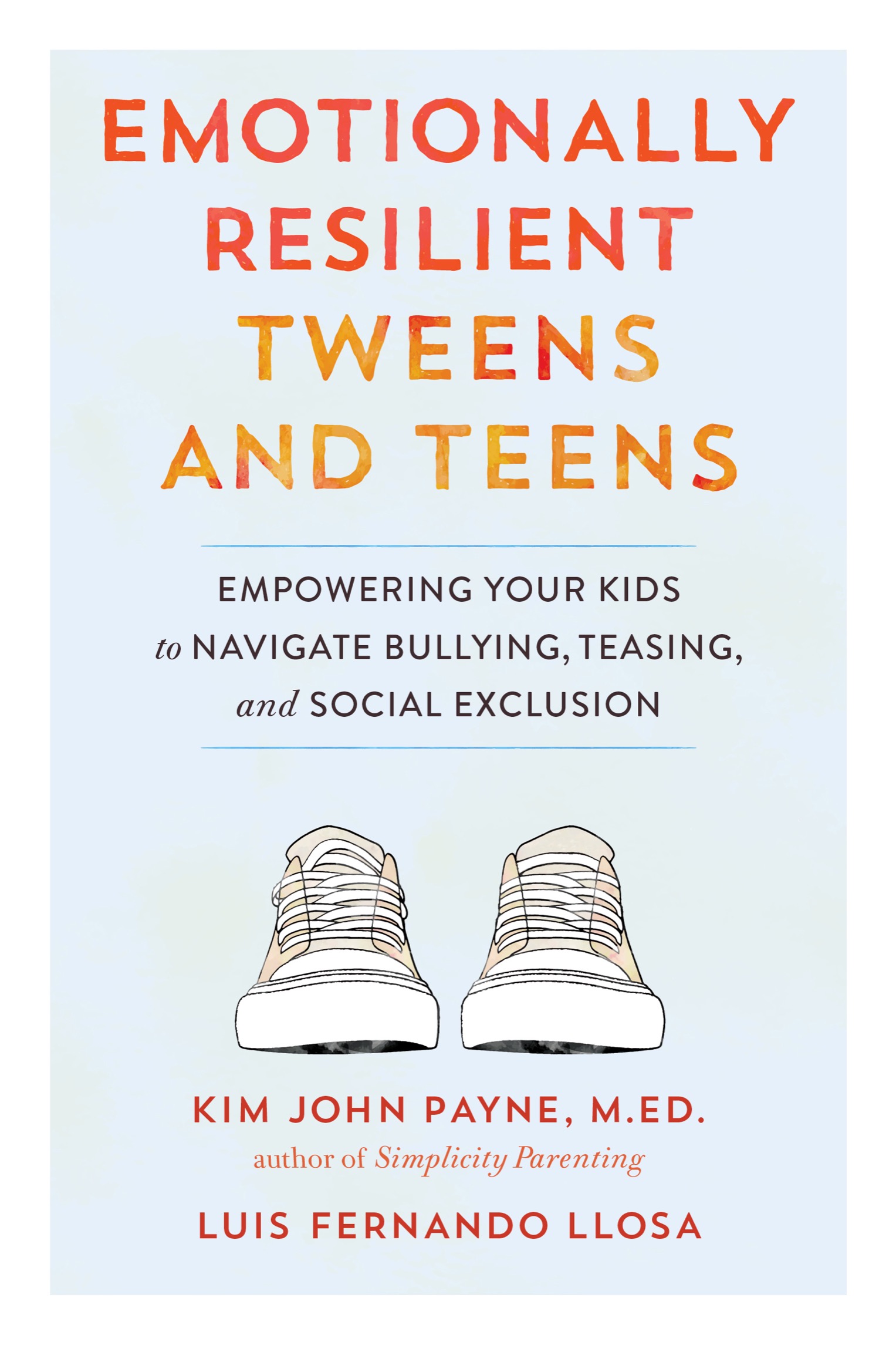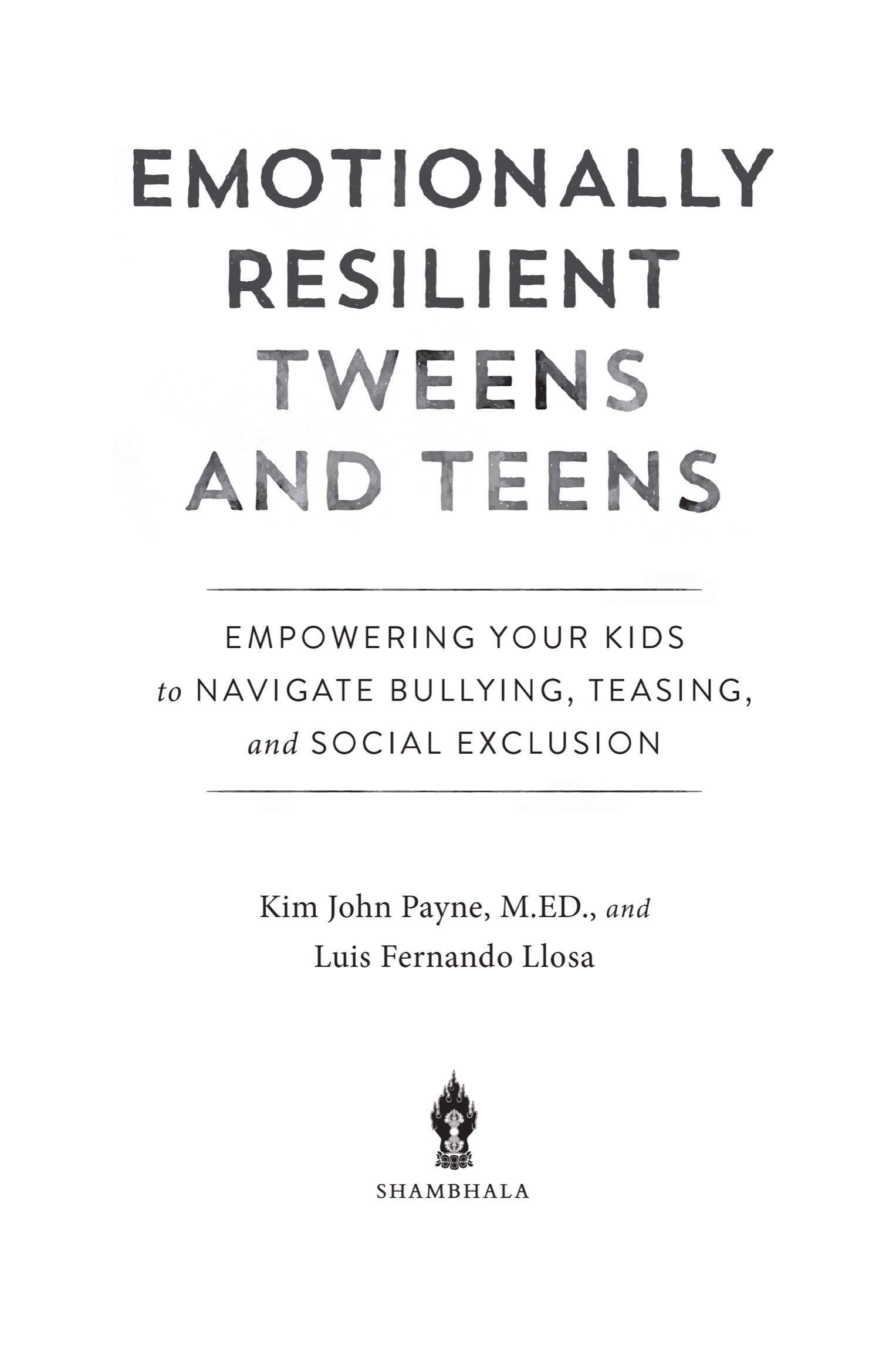Contents
Landmarks
Print Page List
Shambhala Publications, Inc.
2129 13th Street
Boulder, Colorado 80302
www.shambhala.com
2022 by Kim John Payne and Luis Fernando Llosa
Illustration on by Katharine Payne based on the original by Juanita Gonzales from the Alice Birney Schools Student Social Action Committee.
Cover art: Labib Retroman/Shutterstock
Cover design: Daniel Urban-Brown
Interior design: Claudine Mansour Design
All rights reserved. No part of this book may be reproduced in any form or by any means, electronic or mechanical, including photocopying, recording, or by any information storage and retrieval system, without permission in writing from the publisher.
Shambhala Publications is distributed worldwide by Penguin Random House, Inc., and its subsidiaries.
Library of Congress Cataloging-in-Publication Data
Names: Payne, Kim John, author. | Llosa, Luis Fernando, author.
Title: Emotionally resilient tweens and teens: empowering your kids to navigate bullying, teasing, and social exclusion / Kim John Payne and Luis Fernando Llosa.
Description: Boulder, Colorado: Shambhala, [2022]
Identifiers: LCCN 2021062074 | ISBN 9781611805642 (trade paperback)
eISBN 9780834844391
Subjects: LCSH: Resilience (Personality trait) in adolescence. | Bullying. |
Rejection (Psychology) in adolescence.
Classification: LCC BF724.3.R47 P39 2022 | DDC 155.5/1824dc23/eng/20220111
LC record available at https://lccn.loc.gov/2021062074
a_prh_6.0_140600474_c1_r0
KIM JOHN PAYNE
To my sisters, Sally and Maureen, and my brother, Warrenfor being there.
LUIS FERNANDO LLOSA
To Mary, Chai, Isabel, Will, Gabriel, and Inigo. Sharing this journey of self and social discovery with you six means everything to me.
CONTENTS
INTRODUCTION
Our greatest wish for our children is that they will be okay. When they are hurt or excluded by other kids, we feel our family foundation lurch. Teasing, social exclusion, and bullying strike at the core of our family identity, awakening our primal urge to protect them. That is why any solution needs to involve the whole family.
Here in Emotionally Resilient Tweens and Teens, you will find the tools you need to help your child. You will also learn how to avoid fighting your kids battles for them. Because when you attempt to solve their problems for them, you unintentionally block their pathway to personal growth. Better, instead, to stand behind and beside them; and to avoid getting frustrated, overreacting, and angrily calling their school, which inevitably embarrasses them and causes them to stop telling you about what is really going on.
The first four chapters of Emotionally Resilient Tweens and Teens offer you specific, practical advice on how to handle your own reactions when you learn that your child, tween, or teen is excluded or bullied, whether in person or online. You will also learn how to support them through this difficult situation in a way that builds family connection and trust, and, most importantly, helps them develop I can do this self-confidence.
WHAT DOES EMOTIONAL RESILIENCY REALLY MEAN?
When we were young, few of us ever experienced anything close to the frenzied pace of life, competing demands, and heightened expectations that our children face every day. Though we can certainly help reduce some of the pressures our children encounter, others are hardwired into modern living. That is why we hear terms such as resiliency so often these days. Our kids, we are told, need to develop the inner fortitude to bounce back, learn from whats happened, and move on without a significant loss of confidence.
The aim of Emotionally Resilient Tweens and Teens is to help you understand how to better support your child to make a behavioral course correction while their social challenges are still moderate.
But what exactly is emotional resilience? A good way to sharpen our understanding is to juxtapose its characteristics with trauma responses as laid out in the chart below:
What is an
EMOTIONALLY RESILIENT RESPONSE? | What is a
TRAUMA-BASED RESPONSE? |
| Responding freshly to each situation. | Reacting habitually; repetition, looping patterns of response. |
| Returning to a restful state between events. | Maintaining low-grade vigilance between events, rising to high vigilance for all events. |
| Able to enjoy new things and people. | Maintaining low-grade vigilance between events, rising to high vigilance for all events. |
| Finding interest in emotionally neutral information and quiet situations. | Attending only to emotionally charged, highly relevant information. |
| Engaging socially and enjoying friendships, play, and humor. | Experiencing social isolation, fixed routines; avoiding play; unable to generate or respond to humor. |
| Accepting positive performance feedback. | Rejecting affirmation and consistently seeing success as failure, as an accident, or as evidence of not being good enough. |
| Able to bracket negative events. In time: its only happening now. In space: it only affects this aspect of my life. | Magnifying negative events; In time: its always going to be like this. In space: it affects my whole life and contaminates everything. |
Sincere thanks to Dr. Dee Joy Coulter, whose work was the basis for this chart.
SOOTHING TRAUMA AND BUILDING EMOTIONAL RESILIENCE THROUGH STORYTELLING
Stories are the language of childhood. Children learn from them and empathize with them. Thats why stories have been so effective in helping to heal social wounds. Starting with chapter 5, you will find ten stories that help teach our children how to shape their reactions and minimize their vulnerability. Targeted kids need to understand that they cant make bullies stop, because attempting to do that just hands the bullies more control. But they can learn how to stand their ground and take back power by controlling their own responses. That way they can influence a difficult situation rather than passively accept what is happening.
In essence, Emotionally Resilient Tweens and Teens is a toolbox that leads to the development of empathy, promotes problem-solving, and provides hope during your childs socially crucial elementary- and middle-school years.
The subtle but clear messages in these stories will teach your kids how to navigate their own way out of challenging social situations. They will identify with the characters struggles and realize, Oh, its not just me. Others like me have gone through this and found ways to deal with it. If they are okay, I can be too.
Parents who read Emotionally Resilient Tweens and Teens will better understand what their kids are up against and learn how to coach them through the social landmines of their developing world. After you have read these stories yourself, sit down with your elementary- or middle-school child and read together about the trials, tribulations, and eventual triumphs of their peers. Then you can team up to devise effective ways to handle the teasing, social exclusion, or bullying that they encounter.


